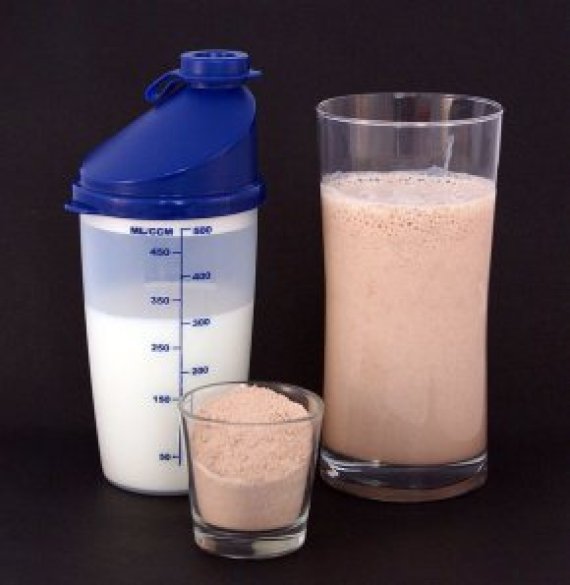Together with colleagues of the chair group Sensor science and eating behaviour, Camps made these conclusions after his research with fifteen young healthy men. On an empty stomach, they drank half a litre of dairy-based shake with sugar, fat and protein in which the energy content and viscosity differed.
‘We tested four types of shakes’ Camps explains. ‘A thin and thick shake with 500 kilocalories – about a meal size, and a thin and thick shake with 100 kcal – a snack size.’ The shakes were thickened with the fibre from the locust bean gum.
Laying still
With the drinks in their stomach the test subjects had to lie still for one and a half hour in the MRI-scanner of Wageningen UR and Ziekenhuis Gelderse Vallei (Hospital in Ede). The stomach was visible on the scan. At the same time the test subjects repeatedly rated their perceived fullness and how hungry and thirsty they were. This was the first time that an MRI-scanner was used for this type of research.
‘with two shakes it went exactly as expected’, says Camps. ‘The thick shake of 500 kcal stayed in the stomach for a long time and caused a perceived fullness for a long time, while the thin shake of 100 kcal stayed in the stomach for a short time and quickly satiated.’
It seems as if the thick feeling of the shake in your mouth is more important for the satiated feeling, than what is actually in your stomach.
The results of the other two were more surprising. Camps: ‘With the thin shake of 500 kcal people did not feel full, although their stomach was already full for a while. And the thick shake of 100 kcal had already left the stomach, but the men still felt full and were less hungry. In other words: It seems as if the thick feeling of the shake in your mouth is more important for the satiated feeling, than what is actually in your stomach.’
Eat less
The question is whether that thick feeling of the shake has enough influence on the amount of food that people eat. In the experimental design of Camps the men were allowed to eat as many ham-cheese sandwiches as they wanted after coming out of the scanner, but the number of consumed sandwiches hardly differed after the different shakes.
‘You could explain this negatively’, Camps reacts, ‘as in: this has no effect. But you could also explain it positively, because the test subjects do not compensate for the calories which they have missed.’
Test subjects do not compensate for the calories which they have missed.
The researchers do not yet understand what the exact physiological effects of processing food in the mouth are, but this is researched further. The new findings do agree with earlier results of research in which small sips, and chewing longer on food, caused for a more satiated feeling.
Carrots
Camps used the results of his research in his own diet. ‘It is a waste to quickly eat a lot of calories with a product which does not have a satiating effect, such as a milkshake. I choose for food which relatively costs a lot of effort to eat, and so satiates more. For example, I enjoy nibbling on carrots behind my computer.’

